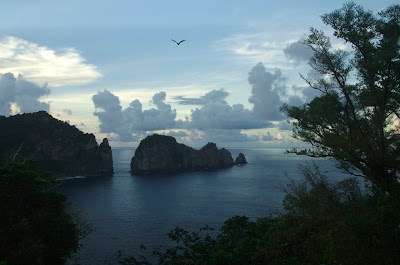 |
| Flying Fox seen over Cockscomb, Tutuila (photograph by Benjamin Richards) |
References:
Natural History Guide to American Samoa, 3rd edition, 2009. P. Craig, editor
Follow the scientists and crew of the NOAA Ship Hi`ialakai as they explore the coral reef ecosystems of American Samoa and the Pacific Remote Island Areas.
The research expedition will be carried out from February 27 to May 24, 2012 aboard the NOAA ship Hi'ialakai. Under the leadership of Chief Scientists Dr. Jill Zamzow, Dr. Bernardo Vargas-Angél, and Jamison Gove, a diverse team of researchers will be conducting multidisciplinary coral reef ecosystem surveys, assessing the status of fishes, corals, algae, marine invertebrates, and the oceanographic conditions in which these organisms exist. The scientific data collected during the three-month research expedition will enable informed and effective implementation of ecosystem-based management and conservation strategies for coral reef ecosystems, helping to ensure their protection for generations to come.
 |
| Flying Fox seen over Cockscomb, Tutuila (photograph by Benjamin Richards) |


No comments:
Post a Comment